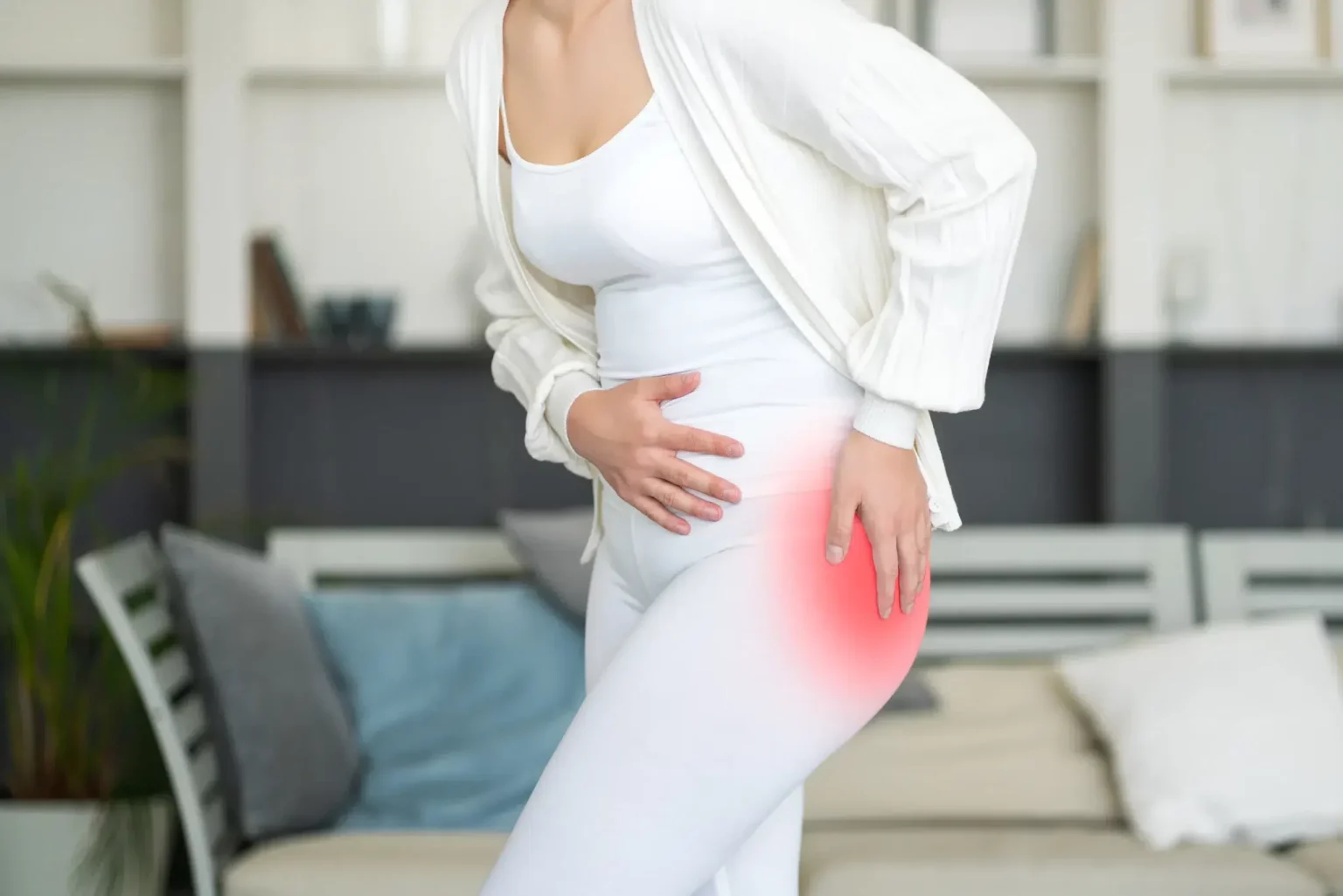Hip pain can be a real roadblock for women trying to maintain an active lifestyle. Whether it’s that nagging ache after a long walk or sharp discomfort during yoga, hip pain can sideline even the most dedicated fitness enthusiasts. Fortunately, preventing hip pain is within reach! With the right knowledge and strategies, you can keep your hips healthy and stay on track with your fitness goals. Let’s explore common causes of hip pain, effective prevention techniques, and simple ways to incorporate movement into your daily routine—all aimed at helping you embrace life without limits.
Common causes of hip pain
Hip pain can stem from various sources, often linked to activities or conditions that stress the joint. One common culprit is osteoarthritis. This degenerative condition wears down cartilage, leading to discomfort and stiffness.
Tendinitis is another frequent issue for women who engage in repetitive motions. Overuse injuries can cause inflammation in the tendons around the hip joint, resulting in pain during movement.
Bursitis also plays a role, particularly for those active in sports. Inflammation of the bursa—small fluid-filled sacs that cushion joints—can create localized tenderness and swelling.
In some cases, structural issues like labral tears may occur due to trauma or excessive strain on the hip joint. These tears disrupt normal function and can lead to persistent discomfort.
Lifestyle factors such as poor posture or sedentary habits contribute significantly to hip pain by weakening surrounding muscles and joints over time.
Risk factors for developing hip pain
Several factors can increase the likelihood of experiencing hip pain, especially among women. Age is a significant contributor. As we get older, our joints may degenerate or lose elasticity.
Obesity also plays a crucial role. Excess body weight puts additional pressure on the hips and surrounding structures, leading to wear and tear over time.
Hormonal changes are another factor that cannot be overlooked. Women going through menopause often experience shifts in estrogen levels, which can affect joint health.
Genetics contribute as well; a family history of hip problems can raise your risk significantly.
Additionally, certain activities or occupations that involve repetitive movements can strain the hips and lead to injury. It’s essential to recognize these risks early on to take proactive steps toward preventing hip pain effectively!
Importance of staying active for overall health
Staying active is crucial for maintaining overall health, especially for women. Physical activity strengthens muscles, improves flexibility, and reduces the risk of chronic diseases.
Regular movement boosts mood and alleviates stress. It releases endorphins that can elevate your mental state. This emotional uplift contributes to a more positive outlook on life.
Moreover, being active enhances bone density and joint stability. Stronger bones reduce the likelihood of fractures as you age. A proactive approach to fitness helps in preventing hip injuries too.
Incorporating exercise into daily routines creates lasting habits that support long-term wellness. Activities like walking or dancing can be enjoyable ways to stay fit while enriching social connections.
Healthy hips are essential for mobility and independence later in life. Prioritizing physical activity today lays the groundwork for a vibrant future filled with possibilities.
Exercises and activities to prevent hip pain
Incorporating targeted exercises into your routine can significantly help in preventing hip pain. Strengthening the muscles around your hips enhances stability and reduces strain.
Start with simple bodyweight exercises like squats and lunges. These movements engage key muscle groups, promoting better support for your joints.
Stretching is equally important. Focus on hip flexors, quadriceps, and hamstrings to maintain flexibility. Yoga is a fantastic option that combines strength building with gentle stretching.
Water aerobics or swimming can also be beneficial. They provide resistance while minimizing impact on the joints, making them perfect for all fitness levels.
Balance activities like tai chi not only strengthen the legs but improve coordination too. This approach helps prevent falls and injuries related to instability.
Consider adding walking or cycling to your regular activity lineup—both are low-impact choices that keep you moving without overloading your hips.
Tips for incorporating physical activity into daily routine
Incorporating physical activity into your daily routine doesn’t have to be daunting. Start small by choosing stairs over elevators whenever possible. It’s a simple change that adds up.
Consider walking or biking for short errands instead of driving. Fresh air and movement can do wonders for both body and mind.
Set aside specific times in your day, like morning or lunch breaks, dedicated solely to stretching or light exercise. These mini-sessions can boost energy levels significantly.
Invite friends along for walks or classes. Making fitness social keeps you motivated and accountable without it feeling like a chore.
Keep fitness gear handy— sneakers by the door make spontaneous workouts more likely! Staying active is about making choices that fit seamlessly into life while prioritizing women’s hip health and preventing injuries down the line.
Diet and lifestyle changes to support healthy hips
A well-rounded diet plays a crucial role in maintaining healthy hips. Focus on incorporating anti-inflammatory foods like fatty fish, leafy greens, and nuts. These can help reduce joint pain and promote overall mobility.
Hydration is another key factor. Drinking enough water keeps your joints lubricated and helps flush out toxins that may contribute to discomfort.
Consider reducing processed foods high in sugar and unhealthy fats. These can lead to inflammation and weight gain, both of which place extra stress on your hips.
Mindful eating also matters. Pay attention to portion sizes to maintain a healthy weight. Extra pounds can strain your hip joints over time.
Embracing a balanced lifestyle with regular sleep patterns enhances recovery for muscles and joints alike. Prioritizing rest allows your body the chance to heal effectively while staying active during the day supports strong hip health for women everywhere.
Seeking medical treatment for persistent or severe hip pain
Sometimes, despite our best efforts in preventing hip pain through exercise and lifestyle changes, issues may arise that require professional attention. For those experiencing persistent or severe hip pain, seeking medical treatment is essential. Ignoring the problem can lead to further complications.
Consulting a healthcare provider will help identify any underlying conditions contributing to your discomfort. They may recommend imaging tests like X-rays or MRIs to get a clearer picture of what’s happening inside your hips.
Treatment options vary based on the diagnosis. Physical therapy can play a crucial role in rehabilitation by strengthening surrounding muscles and improving flexibility. In some cases, medications or injections might be prescribed to manage inflammation and pain effectively.
If conservative treatments do not yield results, surgical options could be explored as well. Addressing issues early prevents them from escalating into more significant problems that hinder daily activities and overall quality of life.
Listening to your body is vital for maintaining women’s hip health throughout all stages of life. Don’t hesitate to reach out for help when needed; proper care ensures you remain active and healthy while minimizing the risk of injuries down the road.






